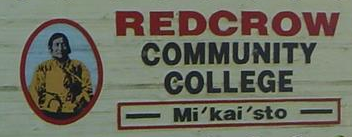Matoakoaksi – Rumex mexicanus (Yellow Root)
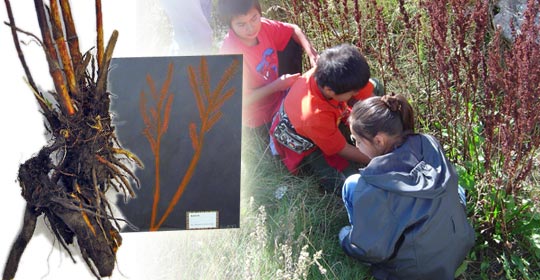
Japheth, Bryton and Laney pick Dock just outside their school.
Matoakoaksi
Matoakoaksi iikainiosaisski. Aotskoisaissksiimoko niipistsi ki otahkoinattsi pisatssaisskiistsi. Matoakoaksi iitaohkooni’p otsitotsikahkohpi miistsi mohsokoistsi, miistakkistsi, ki spahkoistsi. Ihtaiksistsikimissto’p ki ihtatoitsikato’p kinakiiyoohtohkohsiistsi. Iikakaomianistohtayissitapiiyo’p matoakoaksi. Elder Shirley Mountain Horse anikki ihtaisimmiayaw aisaipioohsiiksi ki aistsisookowaniiksi. Matohtaokspanohkio’takio’p.
Narrow-leaf Dock

Rumex mexicanus
Galileo Educational Network
Narrow-leaf Dock is a large, coarse plant with a stem that is strongly grooved and it has a long, thick root. It can grow up to two meters high. It has long bluish-green leaves and pale yellow flowers that produces dark red fruit. Narrow-leaf dock is found in wet, salty areas, waste areas and ditches, throughout the foothills and mountains. It works to clean the dirty water. Narrow-leaf dock is a relative of the buckwheat plant.
The roots from Narrow-leaf Dock has many uses. Medicines made from dock roots are used to make the liver work better and to help clean your blood. You can use the tea for warts and other skin conditions. If you rub it on joints, it helps to take the soreness away. The tea also helps with swollen lymph nodes, those bumps you can feel near your throat when you are coming down with something. Elder Shirley Mountain Horse told us that the tea also helps with diarrhea and stomach upsets.
The roots can also be used to dye things and tan hides. The plant, sometimes called wild rhubarb, is also good to eat. The leaves can be used as sour greens, and they have lots of iron, vitamins and calcium. The seeds can be ground into a flour and used in baking.
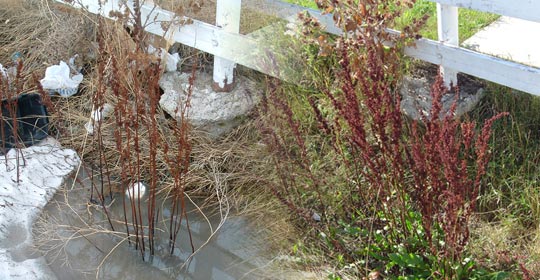
Narrow-leaf Dock is believed to cleanse water systems.
Oseille à feuilles étroites
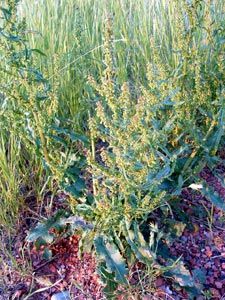
Rumex mexicanus
Galileo Educational Network
L’oseille à feuilles étroites est une plante grossière. Sa tige est fortement rainurée et ses racines sont longues et épaisses. Cette plante peut mesurer jusqu’à 2 mètres de haut. Ses longues feuilles sont de couleur bleu-vert et ses fleurs sont d’un jaune clair. L’oseille à feuilles étroites donne un fruit rouge foncé. Cette plante pousse dans les régions humides et salées, de même que dans les zones de rejet, les fossés, les piémonts et les montagnes. Cette plante nettoie l’eau sale. L’oseille à feuilles étroites est apparentée au sarrasin.
Les racines de l’oseille à feuilles étroites ont de nombreux usages. Les médicaments faits à partir de ses racines permettent au foie de mieux fonctionner et de nettoyer le sang. Le thé d’oseille aide à guérir les verrues et d’autres maladies de la peau. Ce thé aide aussi à faire désenfler les ganglions lymphatiques enflés, ces bosses qui nous sortent dans le cou quand nous combattons quelque chose. L’aînée Shirley Mountain Horse nous a dit que ce thé aide aussi à soulager la diarrhée et les troubles d’estomac.
Les racines de cette plante peuvent aussi servir à teindre des objets et à tanner les peaux. Cette plante, qui porte aussi parfois le nom de rhubarbe sauvage, est bonne à manger. Ses feuilles sont une bonne source de fer, de vitamines et de calcium. Elles peuvent être moulues dans la farine à pâtisserie.
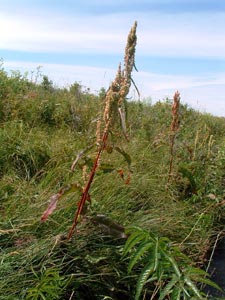
Rumex mexicanus
Galileo Educational Network
- Brown, Annora. (1954). Old Man’s Garden. Vancouver, British Columbia: Evergreen Press Limited.
- Kerik, Joan. (1979). Living With The Land: Use of Plants by the Native People Of Alberta. Edmonton, Alberta: Provincial Museum of Alberta.
- Willard, Terry. (1992). Edible and Medicinal Plants of the Rocky Mountains and Neighboring Territories. Calgary, Alberta: Wildrose College of Natural Healing.



